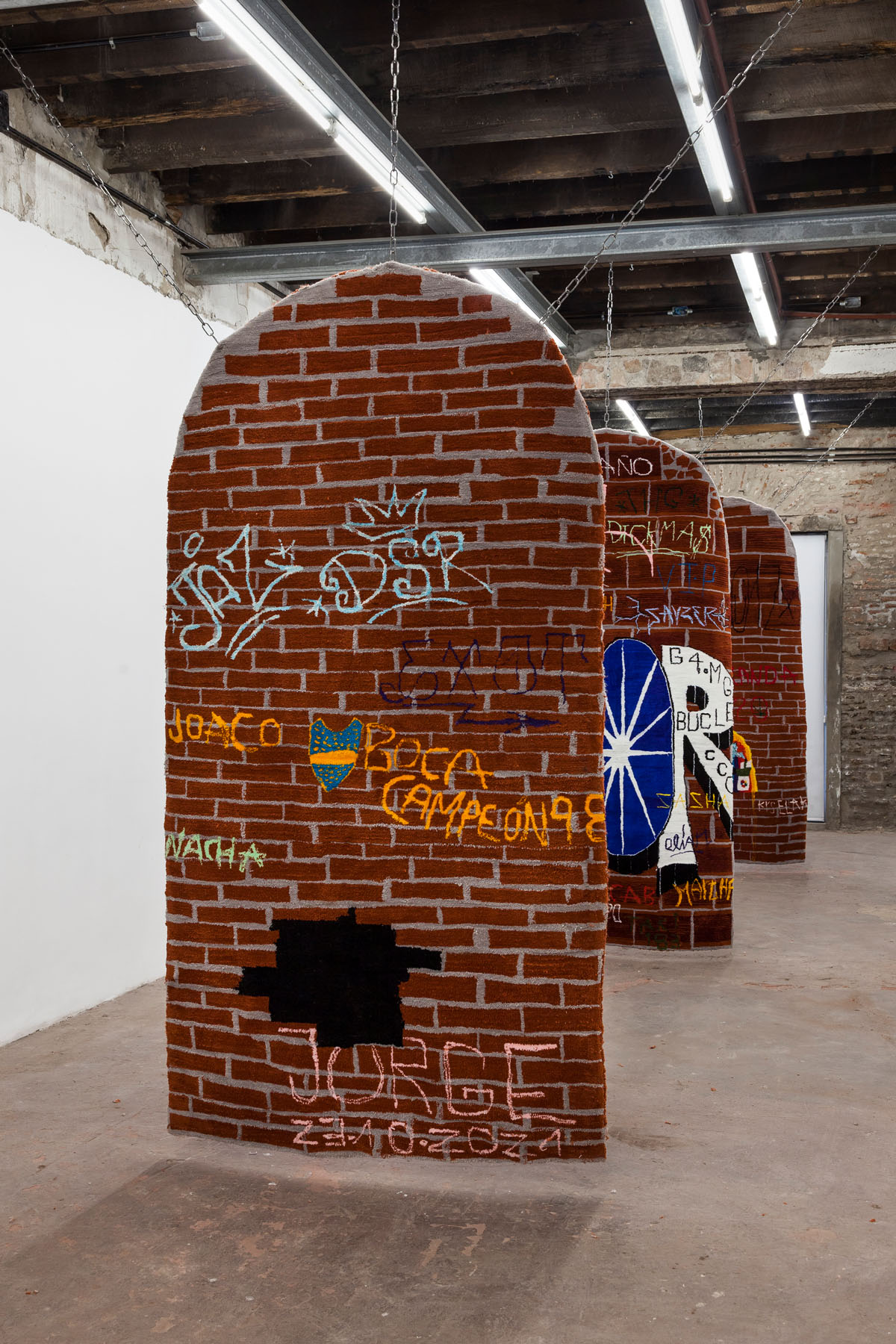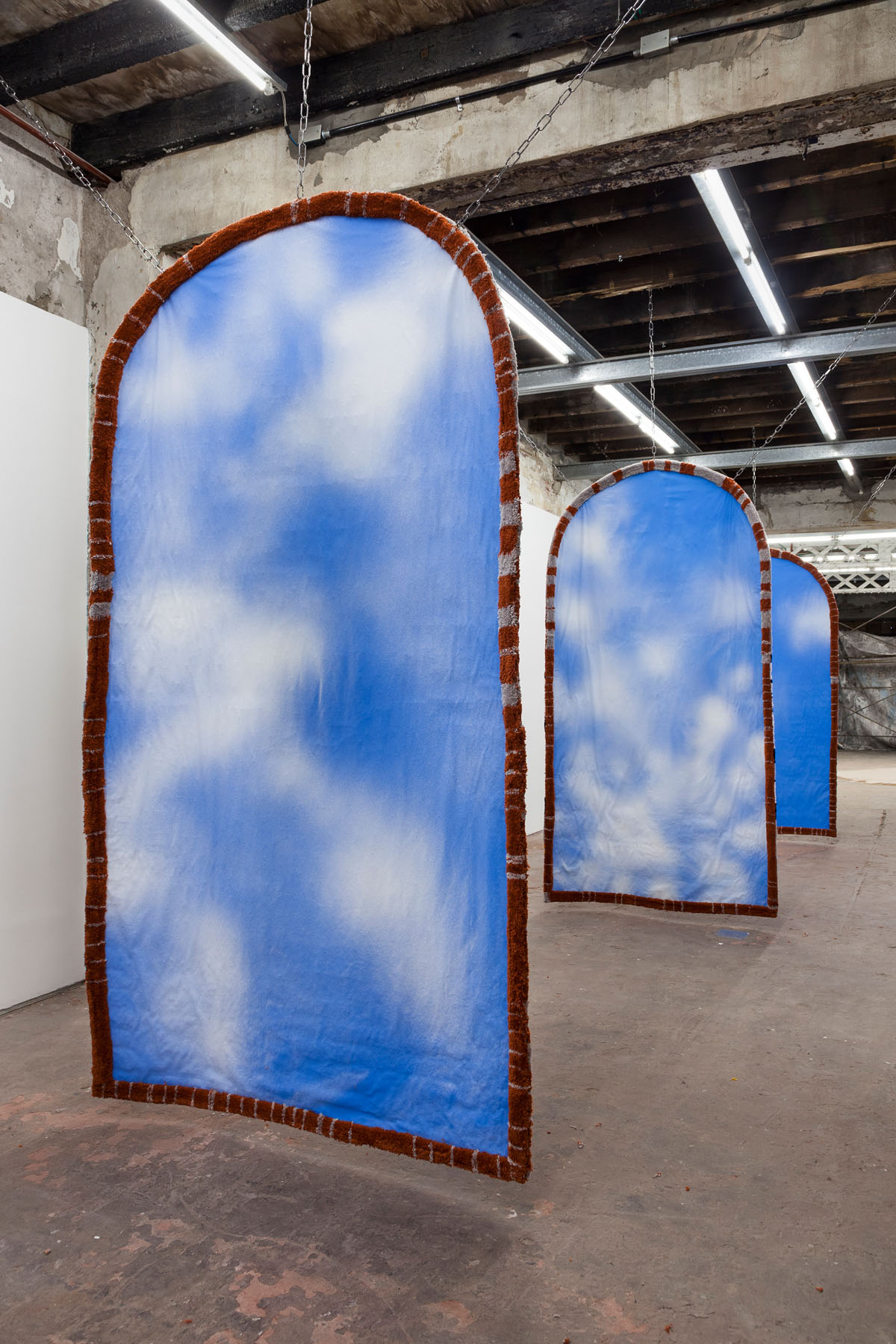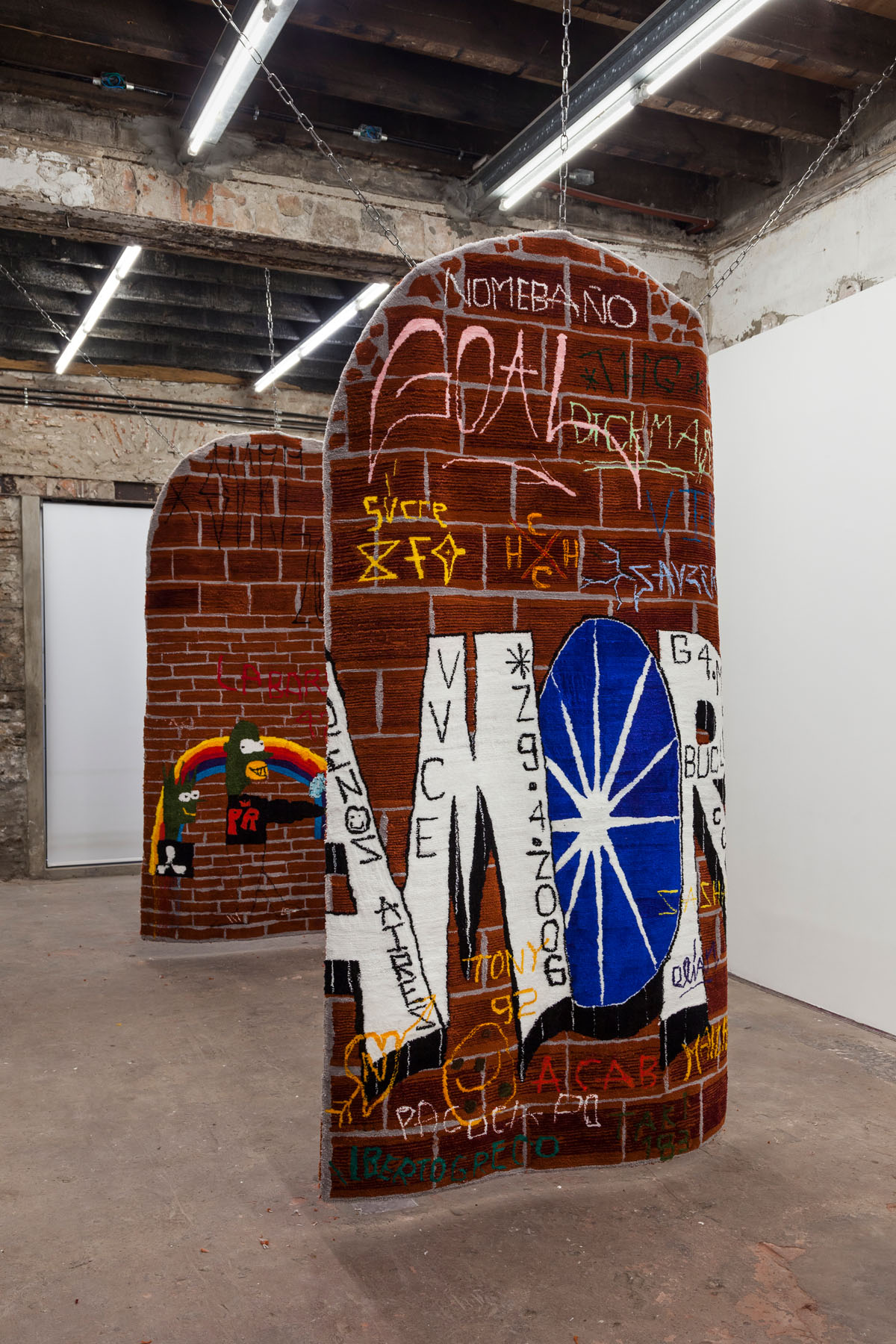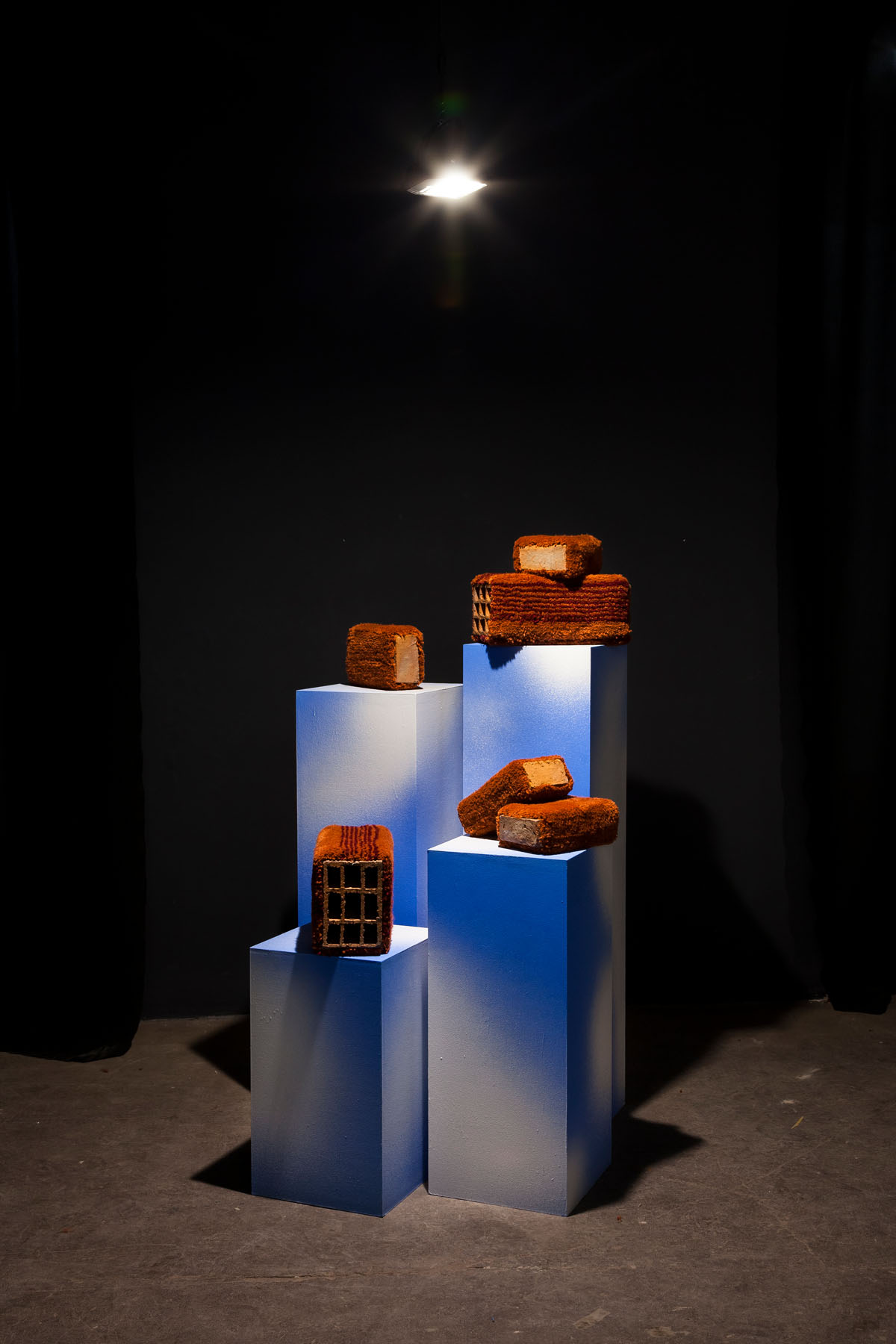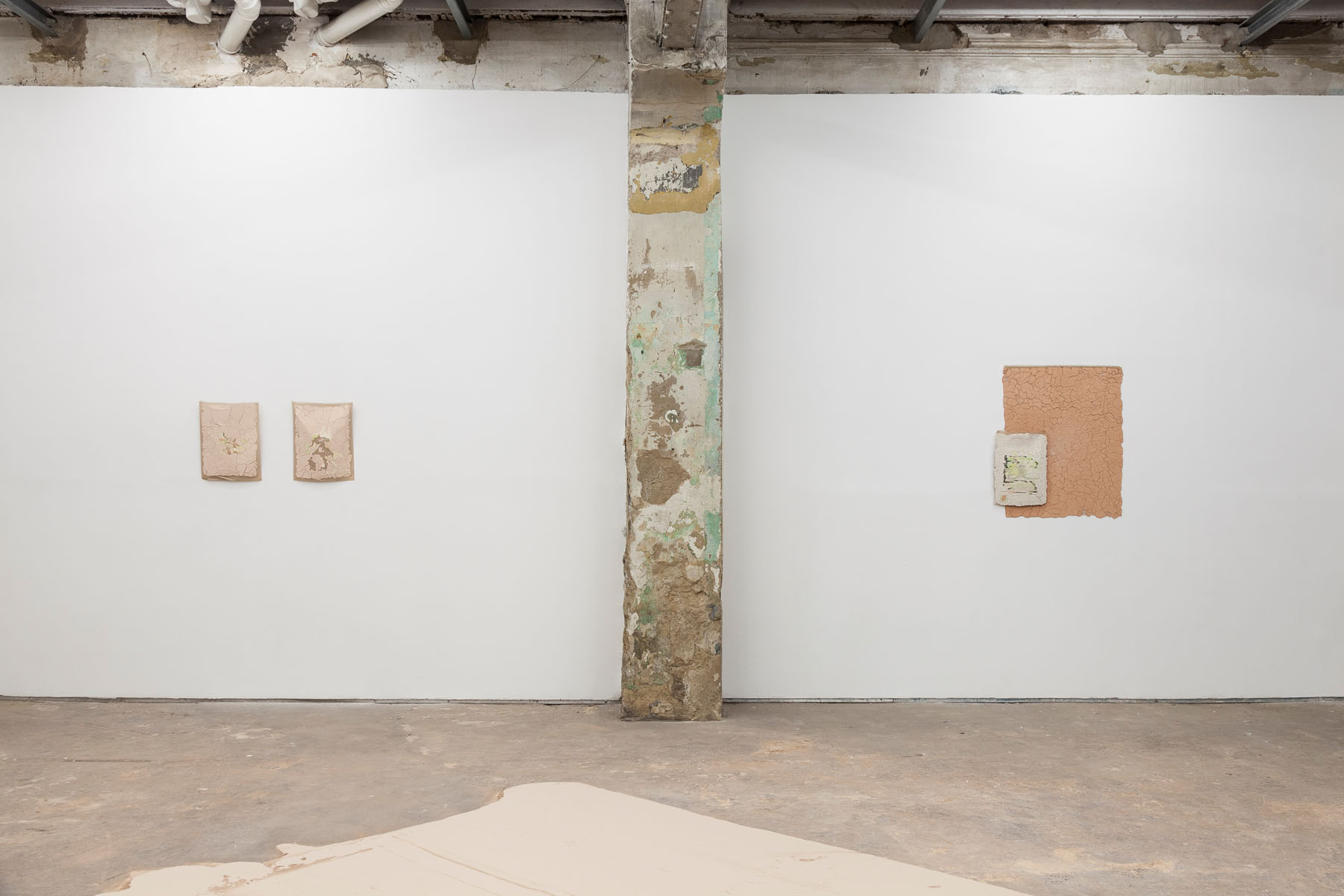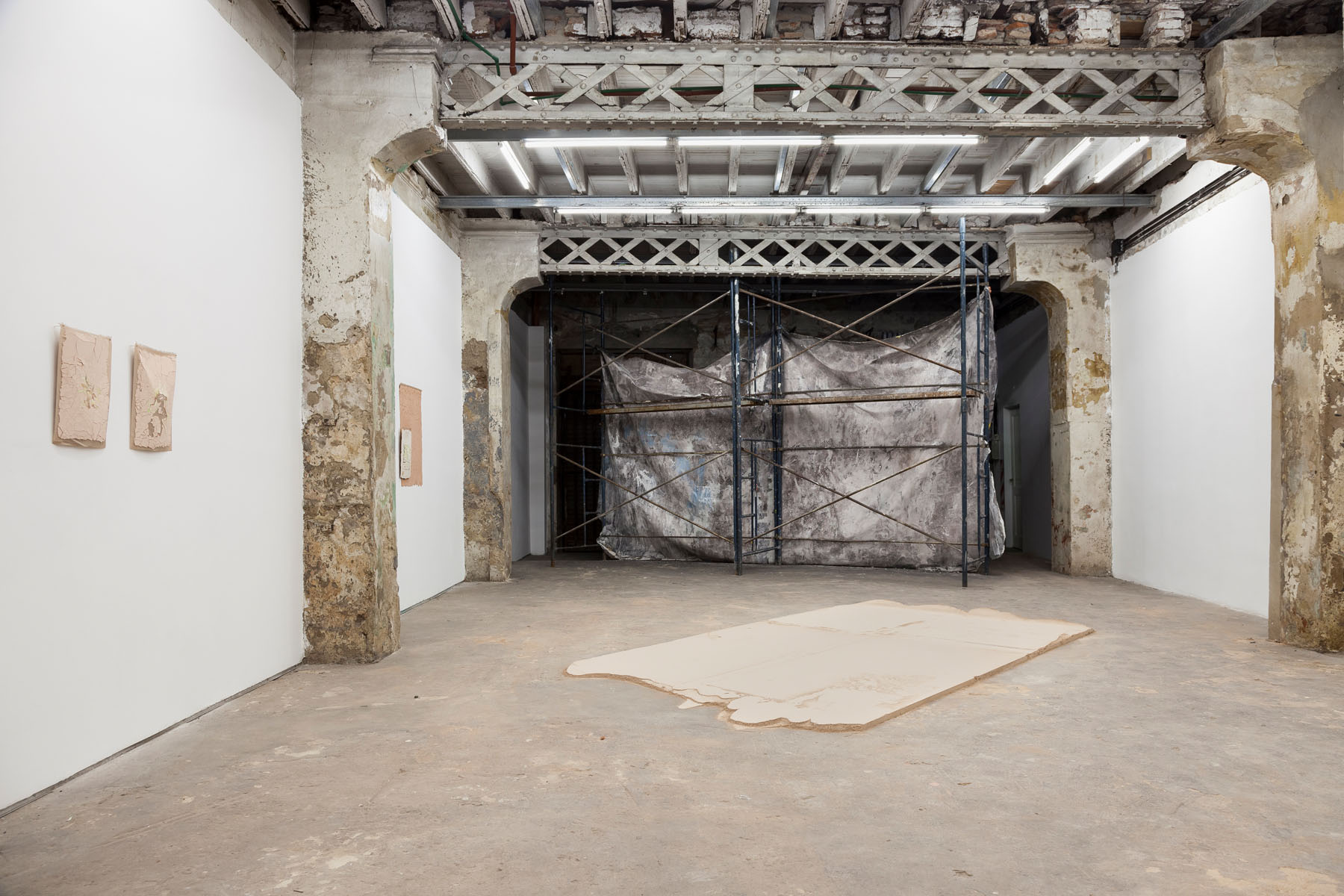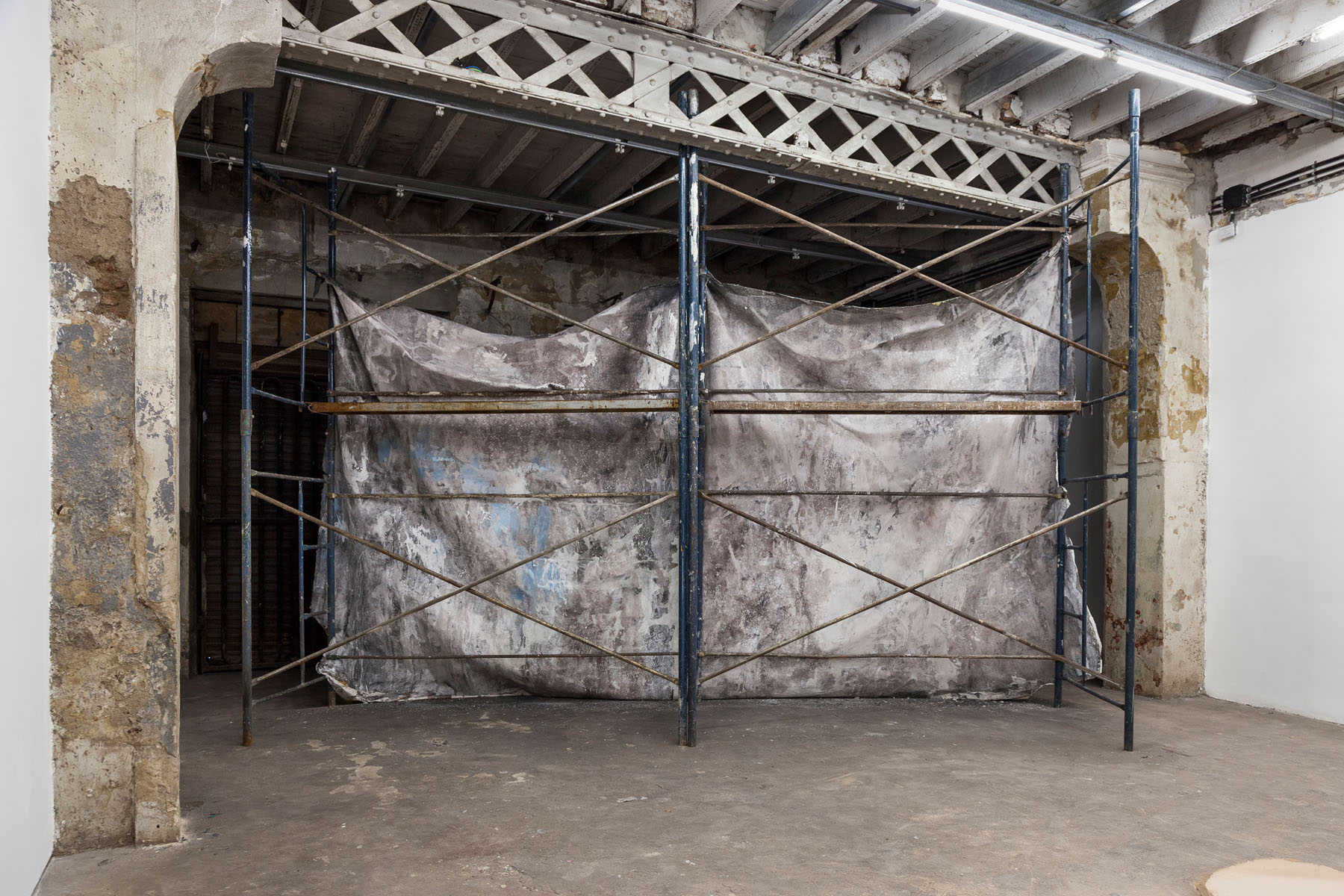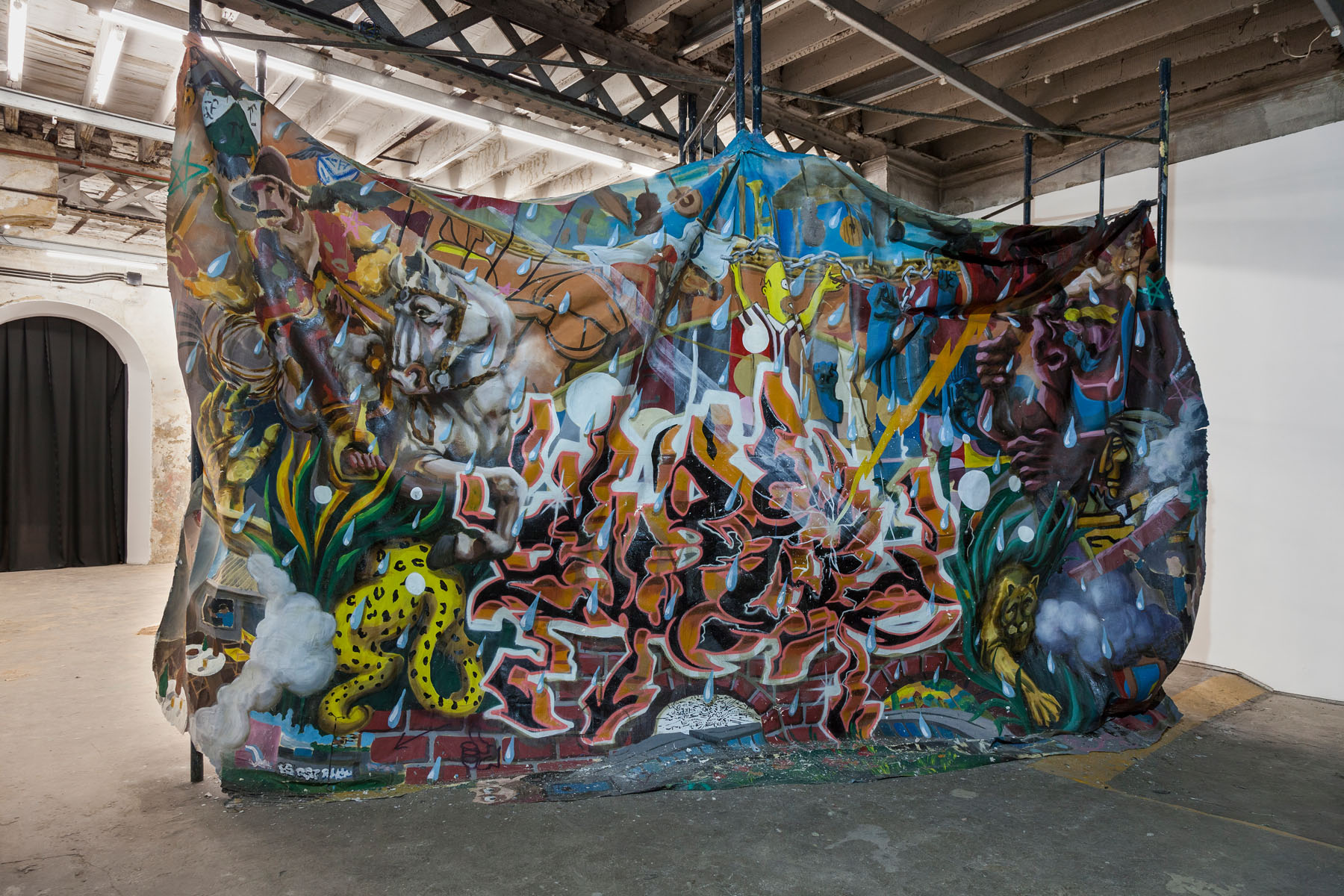Buenos Aires, Argentina 🇦🇷
MUNAR Art Center
23.10.2021 ➝ 20.11.2021
Group exhibition with Nacha Canvas and Franco Fasoli
Curatorial work and text by Joaquín Barrera
Produced by Quimera Galería
Assistance by Alejandro Bonzo
Lighting by Alvaro
Flyer by Nina Kunan
Production assistance by Ignacio Arias and Beatriz Casado
Photos by Catalina Romero
•
In the year 1928 a Flemish immigrant who came to become America settled in Carlos Jáuregui – near Luján (Province of Buenos Aires) – the Flandria Cotton and Textile Corporation, a company that quickly became a project with a high social, economic, sportive and comunal impact. The factory, biult by Flemish immigrants and internal migrants from provinces throughout the country, brought to its community innovative forms of socialization among its workers, in order to generate new associative modes that would encourage production but also leisure. and recreation. This joint and organized work among the workers was soon reflected in a myriad of activities and integrative developments such as the construction of social housing, the cooperative magazine “El Telar”, a school, a cycling club, a yacht club and finally the Flandria Social and Sports Club. Due to the accelerated process of deindustrialization that our country experienced at the end of the last century, the Corporation closed its doors in 1995. However, the cultural, sports and social institutions that were detached from Flandria are still standing, as a symbol of the struggle of an organized community.
This exhibition brings together three artists (Nacha Canvas, Franco Fasoli and Jorge Pomar) who, in order to produce their work, travel through different cities, geographies and landscapes, and carry in their strokes, in their palettes, in their poetics and in their ways of producing the autochthonous of the places from which they come, activating memory resources which are typical of the communities they inhabit. The intense migratory movements, both internal and external, generate different effects on their work processes, acquiring new layers of signifiers on their own production.
Based on the idea of dividing the space into two apparently opposing formats – on the one hand a more intimate exhibition and on the other a more monumental one – the works presented in the two rooms propose new stories about the domestic and the urban, about landscapes. inside and outside, and on the different ways of approaching the production of visualities in the Argentine territory, with special focus on the sensitive gesture of the formal tradition of the practices most linked to the artisanal such as textiles, frescoes and ceramics .
The landscapes that Franco Fasoli presents in this exhibition are clearly mundane and evoke images of neighborhood community tribes, of action, of the messy, of taking the streets. In the small room he presents a cutout of 20 sketches made during his more than 20 years as a graffiti and mural artist. A fantastic little anthology. Almost all of these drawings were taken from paper to wall in different cities around the world. In the main room, Fasoli exhibits a site-specific installation designed for this show, where he reconstructs the history of muralism in Argentina. A fresco that appears to have been extracted from the wall – an operation that has a history of detractors and fire extinguishers in the recent history of our country – is exhibited collapsing on a scaffold. The image that the fresco gives us is a powerful tribute to the history of local urban art, where virtuosos such as Berni, Carpani, Soldi and Alfredo Guido coexist with Siquier’s contemporary work on the subway, as well as with the greatest Homer in the world (Guinness record).
Nacha Canvas, on its side, proposes a landscape of the uncertain, of the fragile, of what the wind drags, of what time piles up. Or perhaps it is just a certainty, the only one possible: when we are no longer here and there is nothing left, there will only be clay, the ancient, perennial and precious fruit of the earth. In the small room, a piece of plastic contains the remains of tiny, cracked pieces of the material adhering to a collapsing skin. In the main room, a large installation of clay dust combed and shappen by the artist seems to evoke the periods of geological formation, the landscapes of a desert, the tectonic plates, the interior of a mountain. On the walls, works made of cooked clay glued on cloth and slightly colored with pigments build tiny and fragmented geographies that somehow become school maps of invented provinces, cities and towns, of plains and pampas, of forgotten plateaus and reliefs.
Jorge Pomar’s works are an intermediate landscape. Something like a limbo between the heavily mundane and the harmonious of the spiritual and heavenly world. In the main room, the artist recreates the gesture of taking the typical arches of Munar’s architecture to create doors that open to other dimensions. These textile arches are walls on one side and skies on the other, as if it were a door to break down in order to go out to play. On one of its faces the walls have the marks and inscriptions of the street, the neighborhood, a community of graffiti artists who take the brick walls as canvases. That gesture of filling these walls with tags from his colleagues is -from an autobiographical side- an evocation of his personal history and his way of being an artist and -from a global perspective- a way of constructing a genealogy and a sketch of a history of urban art. In the small room, on the other hand, he reformulates the operation and synthesizes it, presenting us with real bricks covered in textile bricks on pedestals of clouds that rise towards other universes, proposing new ways of thinking about the link between earth and heaven.
Flandria is the possibility of an imaginary country, of re-creating new landscapes and other forms of associationism. Flandria is the longing for a time, a forgotten factory, the neighborhood that raised us, the dream of a life built collectively. Flandria is the childhood that has already left us, the memory of a town, the memories of the province, the hands stained with clay. Flandria is a bet, in mechanized times, for the sacred power of the artist’s craft.
